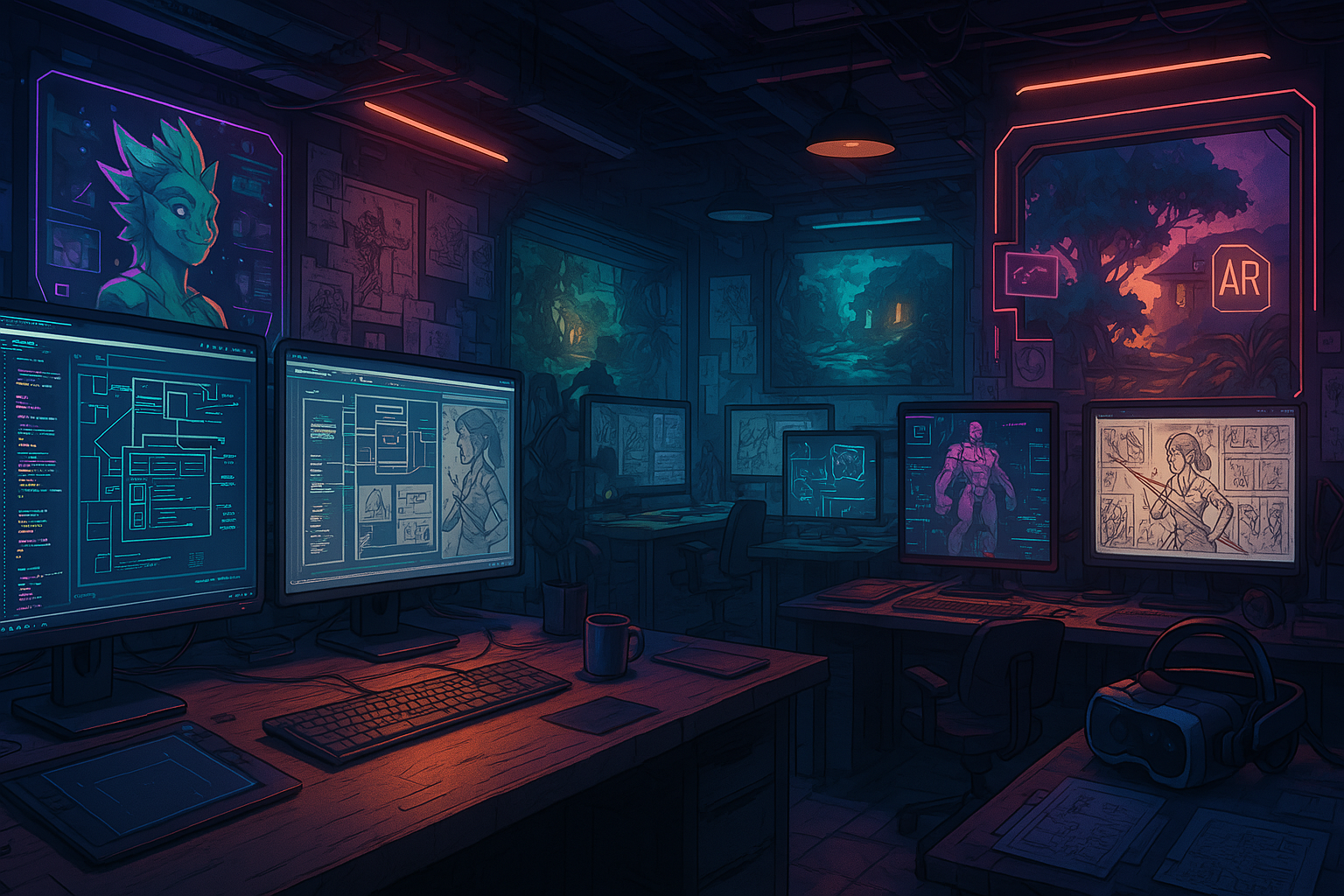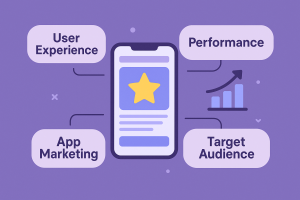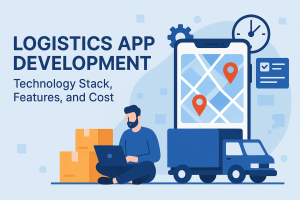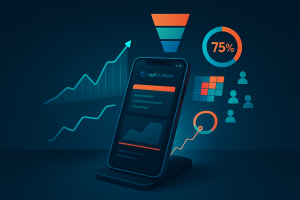Whether an experienced game developer or running a game development agency, you have conceived new ideas to design and create interactive gaming apps. From simple, text-based to interactive and adventurous games, you intend to transform a gaming concept into a game-like reality that mesmerizes the audience. Developing an effective mobile game app requires thoughtful planning and the scope and vision to create the app. You can further explore game app development by reading this informative blog. You will gain knowledge of game app development covering planning, design, development, launch, and post-launch aspects. The blog highlights the development of modern mobile gaming apps that resonate with user’s interests, preferences, and trends.
For additional insights on industry best practices, check out our guide on app developers near me benefits pricing hiring and trends to learn how to optimize your game app strategy.
The article helps inexperienced game programmers carry out an inclusive game development plan that includes determining their goals and objectives of application creation. Designing a comprehensive game design document explicates core mechanics, story elements, technical requirements, and targeted audiences’ perceptions. It assists in producing engaging, lucrative games for the users.
The guide helps coders to write coding scripts for interactive reality games. Learning coding skills allows game developers to create core features, visual elements, and programming features to generate fast-paced games.
The next section of the handbook explicates the types of games designed and built in different eras. It comprises simple text-based games, a graphical user interface, and Arcade video games. PC games have become a leading platform for developers to design role-playing games, and advance adventure games. Game programmers learn about the key features, appropriate programming languages, platforms, and frameworks used for creating casual and hardcore games.
A brief industry snapshot keeps readers informed about game industry trends and how innovative games have grabbed the audience’s attention, allowing gaming app companies to gain remarkable success in the year 2024-25.
Section 1: Planning Your Game App Development Project
How Big is the Game Developing Market Size?
Let’s begin with unlocking game development market analysis and industry trends. The market volume of the mobile gaming market is estimated to grow to over $377 billion by 2027. The active game users in the year 2025 have reached up to 689 million users. With 19 million active servers, the users have real-time access to digital games. The game server acts as the central hub running games across multiple devices that allow users to attain a seamless, responsive gameplay experience. Continuous evolution and growth have been experienced in gaming apps that enable game programmers to unlock groundbreaking developments in the gaming industry.
Driven by technological innovations, developers engage in creating smart and interactive games. AI hybrid-casual games have been anticipated to dominate the mobile gaming landscape with their unique features, game logic, mechanics, and diversified game designs. 3D graphics games are becoming popular among young gamers. With more agile developments, game programmers have come up with some iconic games such as Doom and Quake. Crypto gaming is a new trend introduced to the gaming industry. The game is played on a crypto network, and users can buy or win items and rewards securely and transparently. Another engaging game is Generative AI. It is similar to having a smart robot that understands the user’s request and promptly acts and changes the game pattern based on the consumer’s choice.
The rise of 5G technology has transformed the gaming app industry. With a 5G connection, users enjoy a seamless gaming experience as it provides fast speed, decreases latency, smoothens audio, and enables quick video streaming. Immersive technologies such as augmented reality (AR) connect digital elements in the real world to help gamers gain a mixed-reality experience. Games like Pokéman GO, Jurassic World Alive, and Dragon Quest Walk are built with rich graphics and sound effects, allowing users to play and interact in real time. While playing virtual reality (VR) immersive video games, users enter a virtual gaming environment through headsets such as Apple Vision Pro and Meta Quest 3. These video games deeply engross the players.
Gaming brands and game development agencies involve cross-promotion of games through collaborating with multiple game developers, influencers, and game partners to expand the game reach. Hyper-casual game titles help maximize monetization opportunities and promote games on numerous platforms and communities to attract a wider audience.
Identify Target Audience and Player Demographics
Before beginning an app development plan, a game designer is required to conduct a detailed target market analysis. Evaluating the target market helps gaming businesses know about the specific audiences who exhibit their interest in gaming. The question-and-answer session and valuable consumer feedback let game development services gain knowledge of the customer’s preferences, choices, behavior, and trends. Utilizing this thorough analysis helps developers create thrilling and exciting games that provide an immersive and engaging experience to gamers. Furthermore, valuable demography insights allow marketers to enhance application quality and usability. They modify the application functionaries and add advanced features and technical tools that offer a pleasurable gameplay experience to the users. The gaming publishers, investors, and stakeholders learn the potential viability of different gaming projects and make effective investment decisions. Moreover, they adjust their marketing campaigns based on the evolving consumer’s requirements, preferences, and trends.
For more detailed strategies on reaching the right audience, read our finding the best app developers near you article.
Defining Your Vision and Goals
User Experience (UX) and Engagement Goals
Setting the goals and objectives of the proposed game application significantly influences the overall user experience. The key purpose is to create engaging application features that boost user experience. It implies that developers design game mechanics that involve immersive gameplay. Create compelling mechanics, stories, and characters that keep users absorbed in the game. Developers align their goals with the game-playing choices of the users. It helps them know which application feature motivates users to interact with the game. Moreover, they add more intuitive functions that boost app value in the market, increase retention, and contribute to a cohesive and satisfying user experience.
Another significant app development objective is to align game metrics with users’ perceptions and changing trends. It helps 3D modelers create customized and user-friendly interfaces, in-game mechanics, striking graphic codes, signs, and animation. Moreover, they design easy-to-navigate menus, buttons, access settings, appropriate color patterns, and other design elements that ensure that the game runs smoothly across different devices.
To enhance user engagement further, a game designer carefully selects gamification strategies that provide a personalized experience. For more tips on engaging your users, see our mobile app development a guide for beginners.
Marketing Goals
App marketers line up their marketing strategies with consumers’ perspectives of downloading or installing the required gaming app. The monetization tactics include selling the game on the Google Play Store. App marketers charge a one-time fee from the users when downloading the game from the Play Store. Another option is to allow users to play for free, with optional purchases such as buying additional features or playing advanced game levels. In-app purchases let players purchase in-game currency to buy items. With subscriptions, users have access to premium features and read exclusive content related to the gaming app. In-app advertising, such as running paid ads, banner ads, full-screen ads, and rewarded video ads, attracts both existing and new customers to download the app. Updating the app content with images and application features captures users’ attention. Loyal customers keep coming back, which helps companies generate high conversions and revenue.
Budgeting and Resource Allocation
Regarding meeting budgeting and planning of resources for gaming app development, game designers define project requirements. This includes providing a framework of the game’s core features, target audience, and platforms used for app development. Developers carefully evaluate resource costs covering technical equipment, software, and other assets. As resources are prioritized, the app development company collaborates with numerous clients, stakeholders, the finance department, and project managers to discuss the project’s requirements, scope, and accurate design and development cost. Along with calculating the cost, the business also considers potential risks and challenges during the app development process.
For insights into cost management, check out our cost effective offshore mobile app development guide.
The development team prepares a detailed project plan and breaks down game development milestones into different phases. The first phase comprises pre-production, designing of the prototype, and resource gathering. After the ideation and planning phase comes the production stage. The cost of application production covers 50 to 70% of the budget for developing the core game features, coding, programming, and structuring the gaming app. Integrating graphics and design elements requires developers to keep 10 to 20% of the budget to add visual design elements, animations, and enhance the aesthetics of the user interface. The project manager evaluates the cost of app testing. For pre-launch, marketing, and distribution activities, app marketers utilize 20-30% of the budget. This amount is used to develop pre-launch activities and app marketing campaigns. Creating a realistic budget helps app marketers assess the estimated costs of resources, testing tools, and gameplay mechanics. Thus, the project manager effectively plans the game project by controlling the generated budgets and accomplishing game development milestones.
Project Roadmap and Timeline
Market Exploration
Having a well-organized Game Design Document (GDD) allows developers to get involved in multiple game processing lifecycles. A detailed GDD facilitates broad market research. The survey helps developers know target audience preferences and their existing and changing trends. Designers assess the suitable game mechanics and game engines the users prefer for app development. The comprehensive outline allows game programmers to conceptualize unique and interactive app ideas aligned with the target audience’s perception.
For more detailed resources on planning your game development project, explore our best app development software.
Game Concept and Mechanics
Moreover, GDD also demonstrates the game platform, storyline, mechanics, game levels, and characters. The detailed roadmap covers technical requirements such as employing either the Android or iOS platform. Choosing Unity or Unreal Engine as the game engine, along with appropriate programming languages and essential app development tools, is crucial.
Creating A Game Model
Game designers acquire clear direction to create a game prototype of the proposed game app. They craft gameplay components and features. Following user feedback, a video game programmer modifies the app design and refines the game concept. Thus, they incorporate agile features before the app is finally launched in the market.
Game Design and Programming
The app game plan facilitates developers in using 2D/3D animations, special effects, visual design, and mesmerizing sound effects. Game design involves UX designers in building an intuitive and user-centric interface. Creating flexible, clear, and simple navigation buttons encourages more users to visit the app and ensures smooth interactions within the game. Striking typography, animations, and other graphic effects fascinate gamers from start to finish.
Game programming comprises knowing about different programming languages, such as C#, C++, or JavaScript, to create game logic and features. Using other technical specifications, including art software, audio software, APIs, and servers, facilitates game programmers with the design and development process.
For expert guidance on technical implementation, refer to our 5 common mistakes to avoid in mobile app development post.
App Testing
GDD demonstrates an extensive app testing process. It involves rigorous testing using advanced tools and equipment. These tools identify design and development errors, bugs, and other technical faults in the app. Employing advanced technical resources, developers evaluate the game’s compatibility with various hardware configurations to ensure smooth performance on different devices and platforms.
The release of the gaming app involves thorough quality assurance. Continuous testing helps create a high-performance app that efficiently runs across various devices.
Section 2: Game Design & Development
Game Concept and Storyboarding
If you are a new game developer planning to launch your first gaming app, you are required to develop a strong game concept and storyboard. An engaging storyboard with an appealing narrative helps game designers visually map out the gameplay before production. A fascinating visual plan breaks down the game’s story into the main plot, characters, and scenes. Gamers move a collection of cards representing each scene in a logical sequence. Moreover, designers describe characters, plot, tone, and gameplay functionality.
For more creative inspiration, check out our tech etruesports history reviews future trends article.
User Experience (UX) and User Interface (UI) Design
The usability of mobile gameplay increases with a captivating and intuitive user interface design. Creating a stunning UI/UX for a gaming app allows game programmers to develop visual elements such as menus, buttons, icons, and other gameplay components. Integrating Game UI attracts users and makes navigation easier. For further insights on UI design, see our mobile app development a guide for beginners
Core Game Mechanics & Feature Development
Once game designers have identified the user persona, the next part of game development is analyzing significant game mechanics. This includes tilt controls, level progression, buttons, and sliders that enhance user interaction with the app. Exciting narrative components and immersive storytelling outline how players move through different levels and enjoy their in-game journey.
Integrating Advanced Social Features
Gaming apps are evolving into platforms that allow players to interact and build connections with communities. To boost engagement, developers integrate advanced social features. Multiplayer modes, in-game chat, social sharing options, and matchmaking algorithms pair players of similar skill sets to enhance the multiplayer experience.
Technical Architecture and Cloud Integration
Employing technical architecture in mobile app development allows developers to build robust systems and design the organization of app components. Server architecture comprises structures that aid in data management, security, and performance optimization. The frontend framework offers adjustable screens, navigation, and controls, while the backend handles databases and API integrations.
Cloud computing has transformed the gaming experience by allowing users to play online games via remote servers. For enhanced scalability, consider partnering with an Offshore app development company to leverage cost-effective global expertise.
Choosing the Right Technology Stack
Selecting a technology stack involves considering the app project’s scope, genre, graphics requirements, audio, and overall game mechanics. Game designers typically use Unity or Unreal Engine along with programming languages such as C# and C++. Cross-platform frameworks like Flutter or React Native help create gaming apps that run smoothly across devices.
Developing a Minimum Viable Product (MVP)
Creating a minimum viable product is fundamental to app development. The MVP helps validate the app idea and test essential features during early product cycles. Game developers use iterative feedback to modify the application version, reduce time and resources, and add agile features. This approach minimizes costs while ensuring market readiness.
For more practical insights, visit our best app development software article.
Quality Assurance and Testing
The final stage of game development involves rigorous testing of all features and mechanics. Usability testing, A/B testing, and security testing ensure the app performs flawlessly. Continuous monitoring and updates help maintain high performance and user satisfaction.
Section 3: Launch Strategy
Marketing Strategies
App marketers develop pre-launch campaigns including promotional videos, optimized landing pages, in-game events, and paid ads. These strategies build buzz and anticipation for the gaming app, increasing visibility and download rates.
For detailed promotional techniques, refer to our 5 common mistakes to avoid in mobile app development post.
Social Media and Community Building
Developing social media campaigns on platforms like Facebook, Instagram, Twitter, and TikTok boosts engagement. Organizing community forums and Discord channels further enhances social interaction. Gamers can share tips, strategies, and experiences, creating a loyal player base.
Global Launch Execution
To successfully launch and market your app globally, select an international mobile app development agency. Researching top app development companies in the USA can help you penetrate competitive markets. The experts promote global marketing via ASO, social media campaigns, influencer partnerships, and cross-promotional activities.
Additionally, many businesses seek local expertise through App Developers Near Me services (services link) and also consider to hire mobile app developer for tailored solutions (services link).
The game industry marketers increase organic growth by launching apps on Google and Apple Stores using optimized keywords, compelling metadata, and eye-catching visuals.
Recapitulate
Whether you are a new video gamer or an experienced gaming company planning to launch your new app, understanding game mechanics, immersive storytelling, character development, and intuitive UI design is crucial. Beginning with brainstorming, game designers explore role-playing mechanics and narrative elements that resonate with users. A well-structured and visually pleasing user interface assists gamers in accessing various app features, including settings, maps, and skills, providing a pleasurable navigational experience.
The significant elements of game development include rigorous testing and designing gameplay mechanics, sound, and visual components. Pre-launch marketing campaigns on websites, social media, and online platforms create buzz that increases retention and elevates app visibility. To reach a broad audience, marketing companies launch apps on the Apple App Store or Google Play Store using optimized keywords and metadata.
Agile gaming technology continues to evolve, with advanced features such as 5G connectivity, cloud gaming, cross-platform play, and AI-powered gameplay making gaming more accessible and engaging.







